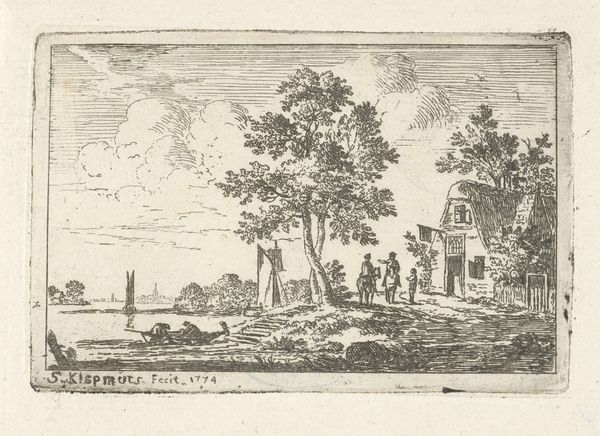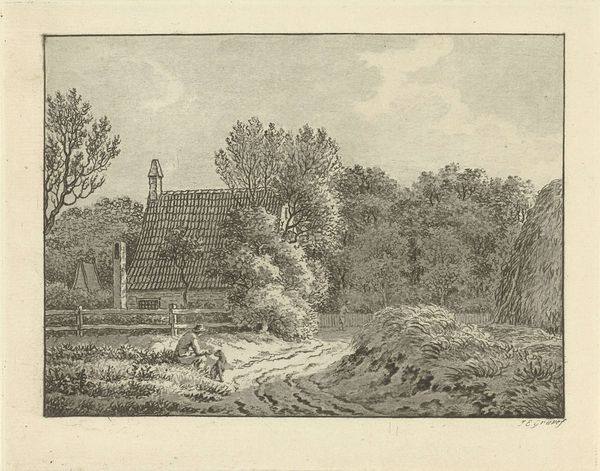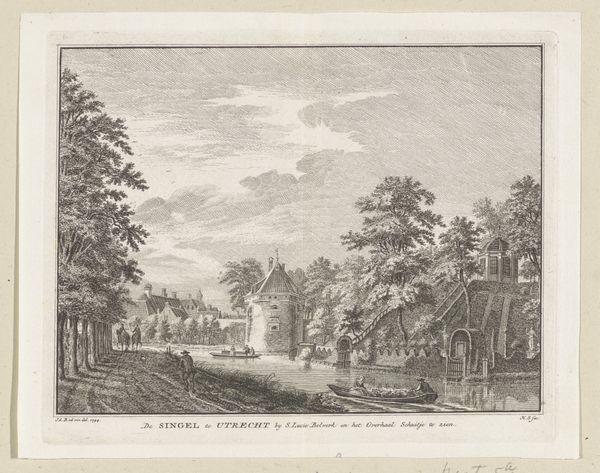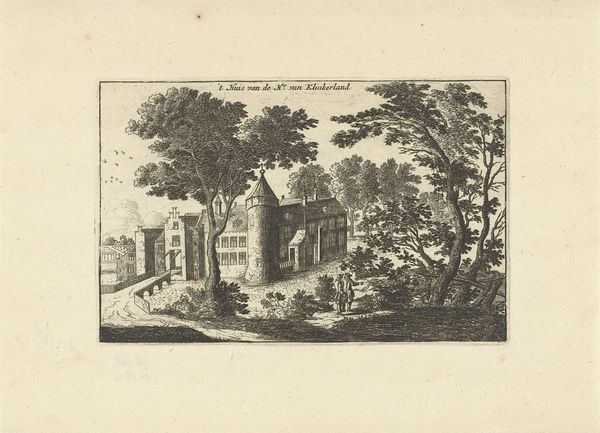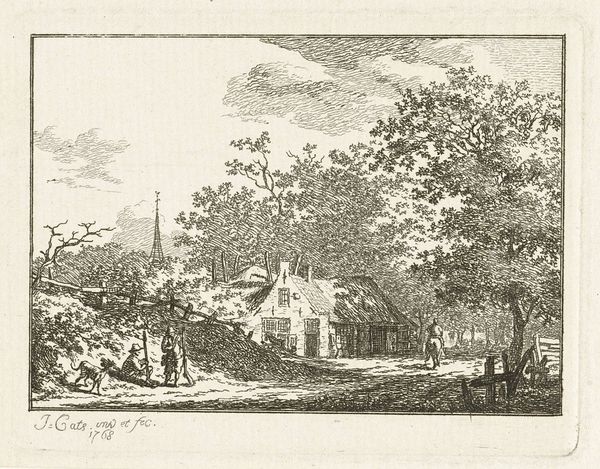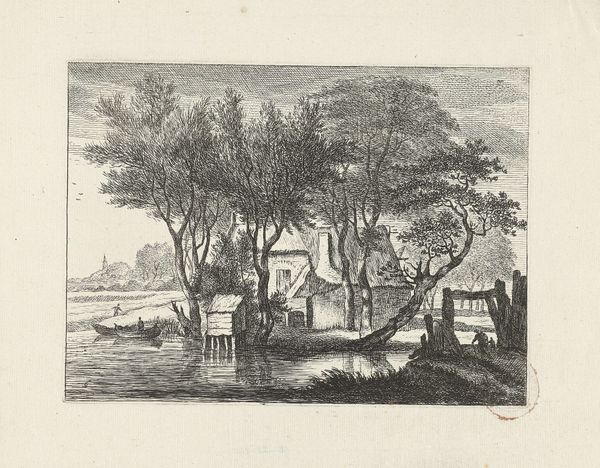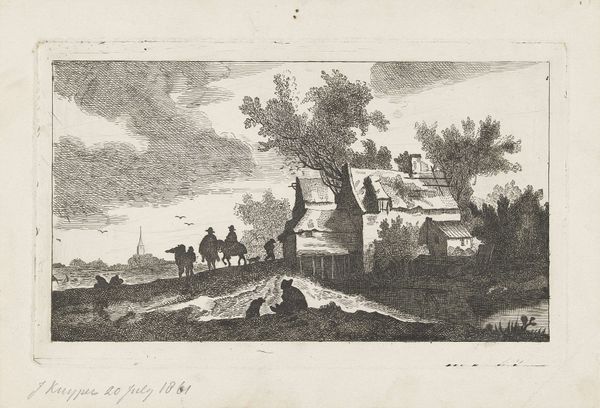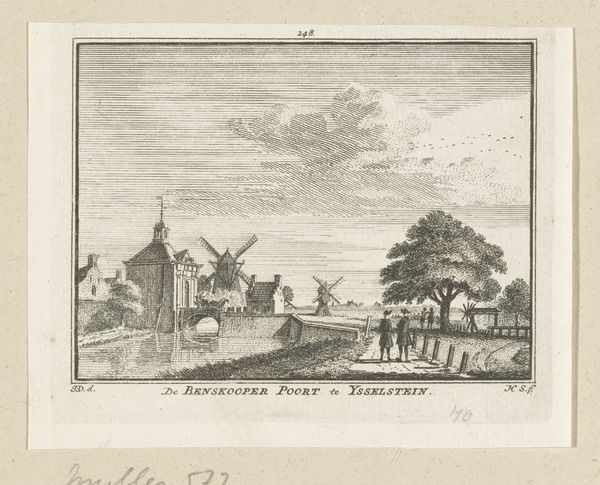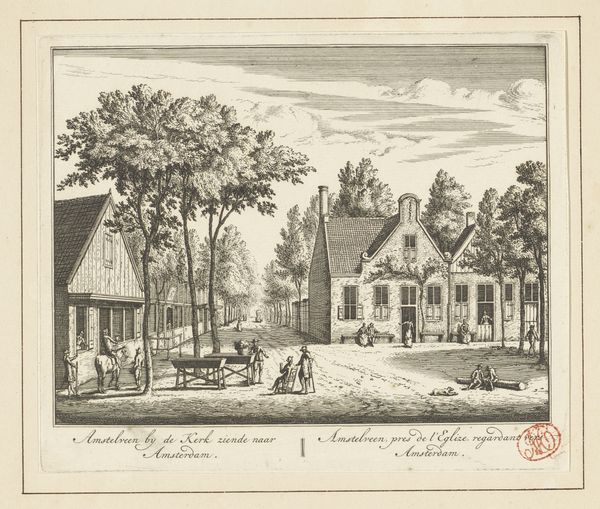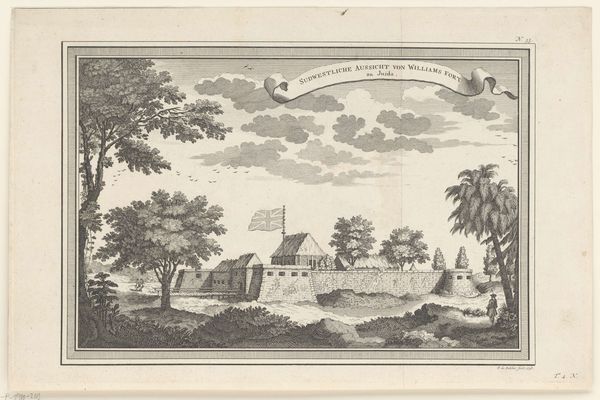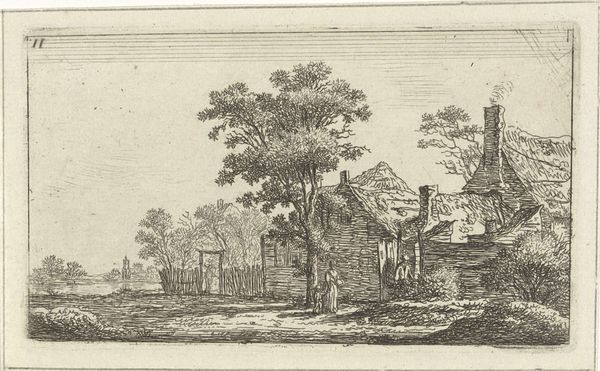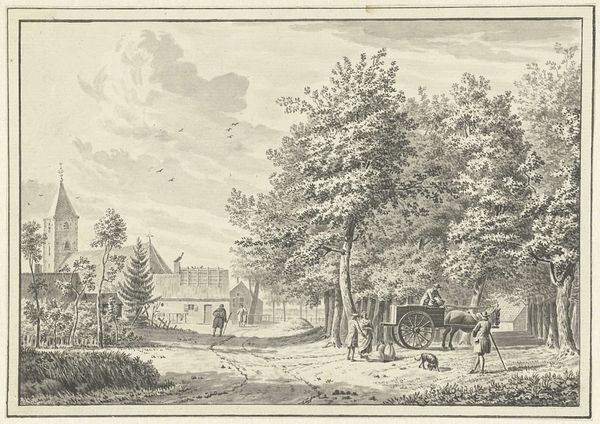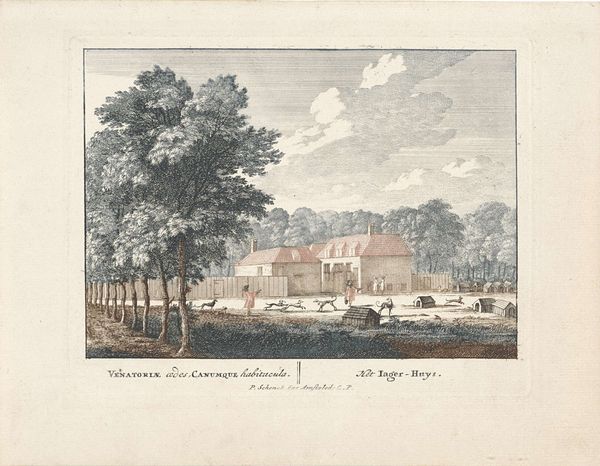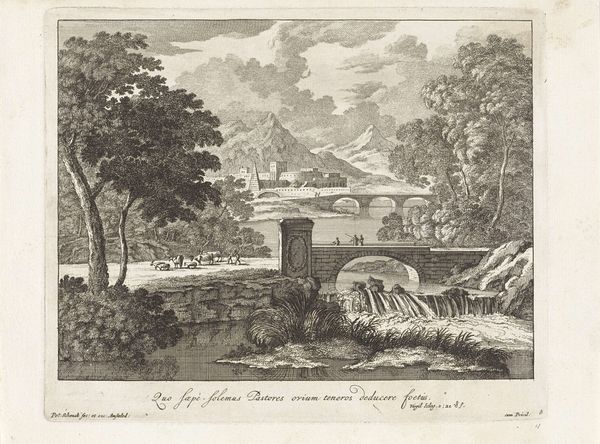
print, engraving
#
dutch-golden-age
# print
#
old engraving style
#
landscape
#
cityscape
#
engraving
Dimensions: height 82 mm, width 107 mm
Copyright: Rijks Museum: Open Domain
Curator: Welcome to the Rijksmuseum. Today, we're looking at "Gezicht op Huis Rijnenburg," or "View of Rijnenburg House," an engraving created between 1750 and 1792. Editor: My first impression is how still and composed this landscape is. It evokes a sense of calm, even privilege, capturing a specific vision of Dutch life. The rigid parallel lines create this sense of control. Curator: Exactly. Look at the detail achieved through the engraving process. Consider the labor involved, each line carefully etched into the plate. It demonstrates skill and precision as part of this production of images. It highlights the societal values around craft. Editor: And the house itself. It’s presented as the nucleus of this entire landscape, a visual affirmation of social hierarchy and power. Note how it positions wealthy individuals in their pleasure boat taking in the nature around them. Curator: Good point. The inclusion of figures underscores human engagement within this space, with what almost appears to be servants included in the scenery. We see a specific kind of societal interaction, which the artist is demonstrating. Editor: And think about the implied consumption here: the consumption of landscape as a sign of wealth and status, the resources needed to maintain such an estate. This landscape serves as a visual manifesto of that time. Curator: And yet, despite its seemingly straightforward depiction, it provides invaluable documentation. Consider the print's materiality. As a transferable medium, this very artwork spread particular ideas around societal status at the time. Editor: I see that tension - documentation versus a reinforcement of class structures. And how these detailed lines themselves signify order. They offer a commentary on the relationship between humanity, environment, and class during the Golden Age. Curator: Reflecting on the work, the engraving provides not only an overview of that historical era and place but offers insight into how artists played a part in the social-economical dialogue through material choices and the very dissemination of artwork itself. Editor: Right. It's about engaging with both the beauty and also the potentially problematic viewpoints from this snapshot of history that remains so deeply relevant even today.
Comments
No comments
Be the first to comment and join the conversation on the ultimate creative platform.
